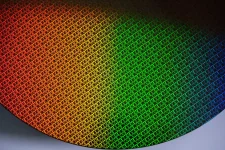Intel wants to lead the industry with its new 18A process. The company showed impressive improvements at a recent tech event. This process offers 30% better density than Intel 3. It runs 25% faster with 36% less power when tested on standard ARM parts. The area works more efficiently compared to earlier versions.
The chip uses PowerVia technology for stable power delivery. This new approach puts power connections on the back side. Putting wires underneath leaves more room up top for data signals. The design packs cells more closely together for better performance. Intel has caught up to TSMC's N2 process with similar memory density.
These chips might first appear in Panther Lake devices. Clearwater Forest server chips should also use this advanced process. Products with these chips could appear around 2026. Everything depends on Intel making enough working chips. The company needs good production rates to succeed in the market.
The chip uses PowerVia technology for stable power delivery. This new approach puts power connections on the back side. Putting wires underneath leaves more room up top for data signals. The design packs cells more closely together for better performance. Intel has caught up to TSMC's N2 process with similar memory density.
These chips might first appear in Panther Lake devices. Clearwater Forest server chips should also use this advanced process. Products with these chips could appear around 2026. Everything depends on Intel making enough working chips. The company needs good production rates to succeed in the market.












